So, have our Madagascar articles given you wanderlust? Are you planning a trip to the Grande Ile? If that’s the case, here are our top 10 tips for Madagascar independent travel, to help you plan your own adventure!
1) At the Airport – $$$, visa and transfer
So, you’ve landed at Ivato Airport! Woohoo! Welcome to Madagascar!
There are a few things you need to know before going through immigration. As of August 2014, 30 day visas to Madagascar are free. If you’re staying over a month, you’ll need to pay a visa fee (45€ for two months) at the desk on the right-hand side as you come in.
After you’ve cleared customs, we highly recommend exchanging some cash into Ariary, Madagascar’s currency. Unlike most places where airport exchange bureaus charge exorbitant rates, Ivato Airport offers the most convenient rates in the country. So, stock up – but be aware, you’ll be left with a gangster style pile of cash, as the highest Ariary denomination is 10,000, less than 3€.
To get into town, check if the Adema shuttle bus is running. This bus stops at various hotels around town and leaves whenever there’s an international plane landing, although service at night is irregular. In any case, transfer for one person costs 10,000 Ariary. Taxis charge 30,000-50,000 Ariary.
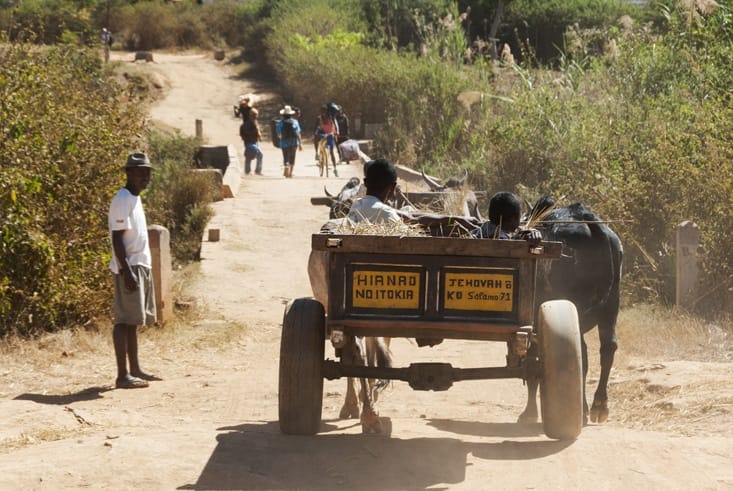
2) Getting Around – Meet the Taxi-Brousse
If you want to travel around the country independently, taxi-brousses are your best bet. These shared minibuses, packed in a way that you didn’t believe was possible, run pretty much everywhere in the country. On one hand, they cost peanuts, but on the other, rides can be long, uncomfortable and possibly dangerous.
We always used taxi-brousses to travel around Madagascar and lived to tell the tale (just!). For a complete guide to taxi brousses, we’ve written this article for you.
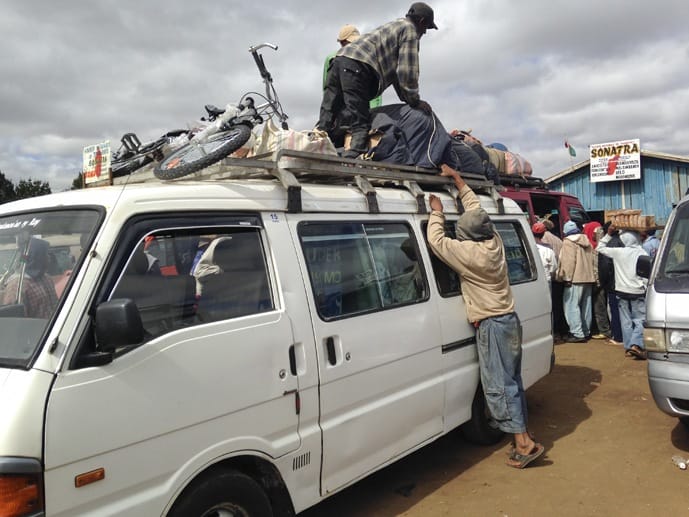
3) Going Retro on a Renault 4
Are you a fan of road trips? Are you not brave enough for taxi brousses, or do you want to experience some of Madagascar’s retro mood with your very own Renault 4? Despite most guidebooks telling you it’s impossible, you can actually rent a car without a driver. Although we didn’t try that for ourselves, we heard that he most reliable person to go to is Coen Oldenhof, a Dutchman living in Tana. Here are his email contacts routes.2000@wxs.nl or cineroutes@moov.mg

4) Hitching a lift on a 4×4
A 4×4 with driver is by far the best transport option on Madagascar’s unreliable roads. Trouble is, it doesn’t come cheap – prices start from 50€ per day for the vehicle, up to 150€ on notoriously bad roads.
But there are ways to travel by 4×4, at a fraction of the price. Ask around at hotels, guesthouses and traveller hangouts for any 4×4 travelling to your destination with spare seats. You may be lucky to find some drivers who will let you share the ride for a little more than the taxi-brousse fare.
It’s very easy to hitch a ride from Tulear to Tana, as most tourists travel south by 4×4 and fly back. Drivers relocating the vehicle to Tana may be happy to let you share the ride for as little as 100,000 Ariary per person – the gruelling 30 hour taxi-brousse ride costs about 60,000.
5) Use local travel agencies
Now, in Madagascar independent travel is the way to go in my opinion, but even I can’t deny that some destination require extra planning. Experiences like climbing Pic Boby and the Tsiribihina River descent can’t be organised independently. Western-owned agencies (whether or not they are Madagascar-owned) tend to charge a premium simply because they’re Western-owned.

Locally-owned agencies like Antsirabe-based Madagascar Tropic Voyage are not only considerably cheaper, they also offer consistently reliable service and – better still – they offer locals a chance of employment. Our guide Jimmy was fluent in both English and French and a mine of information in terms of Madagascar nature, wildlife and folklore.
6) The ins and outs of National Parks
National Parks are the reason why you’re coming to Madagascar, pure and simple. But they don’t come cheap. The reason is that it’s compulsory to visit Malagasy parks with a guide, whose fare isn’t included in the park entrance fee. To give you an idea of costs, for a day-long (8 hour) tour of Ranomafana National Park, the guide fee is 90,000 Ariary, plus 25,000 each for entrance – 140,000 Ariary, about 40€.
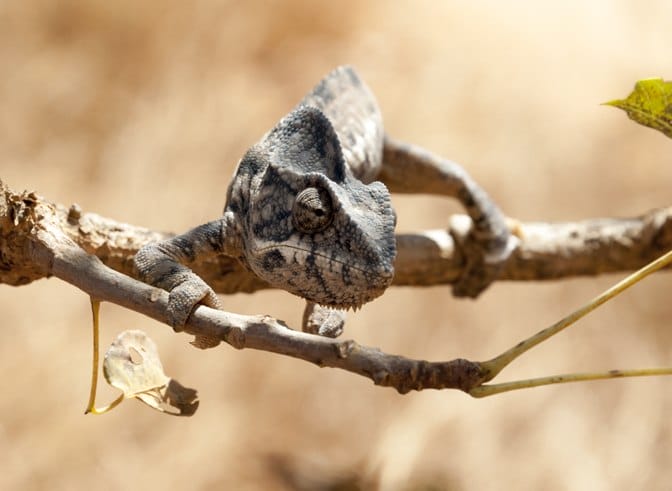
There are two ways to get the most bang from your buck. First, don’t book a guide through your hotel (who might charge a commission) but hire one at park headquarters on the day. If you’ve got your heart set on a specific guide, by all means contact him/her in advance, but pay them at park headquarters.
In most parks, guides accept groups of up to 4 people so it’s a good idea to team up with other travellers to split the guide fee. As always, ask around, or hang around park headquarters asking others if they want to share the tour. We did that twice, at Anja Reserve and Isalo National Park, and never had to wait more than fifteen minutes.
Visiting a national park in Madagascar can be pricey, but it’s totally worth it. Madagascar wildlife is unique and totally weird – just have a look at the aye aye, one of the world’s weirdest animals!
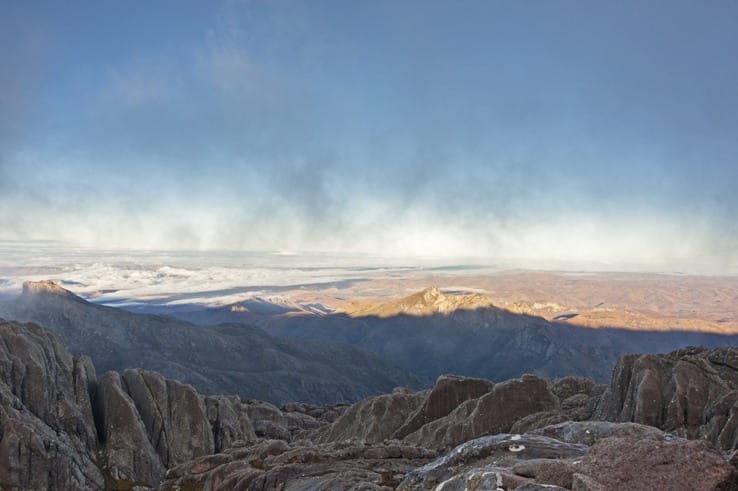
7) Hotels and Guesthouses
In Madagascar, hotels can be divided in two groups; those quoting prices in Euro, and the ones quoting in Ariary. Euro hotels are usually midrange to top end, often Western-owned or part of large hotel chains, and can be an amazing deal if you’re prepared to pay a little more. To give you an example, beautiful Grand Hotel des Tsingy de Bemaraha cost only 30€ per night, and in Anakao, on the southern coast, we’ve seen top-end beach bungalows for 60-70€.
If you’re a budget type, opt for hotels and guesthouses quoting prices in Ariary. Generally locally-owned, these hotels range from dingy dives to beautiful colonial mansions, with an air of faded grandeur. More often than not there will be nothing to write home about; a bed, a bathroom with hot water (if you’re lucky) and that’s about it. Average prices are 30,000-50,000 Ariary (10-15€).
8) Food in Madagascar
Madagascar food can be divided in two groups; utterly disgusting and mouthwateringly delicious. Budget eateries are called hotely, and if you’re travelling by taxi-brousse, rest assured you’ll stop at one. 3,000 Ariary (less than 1€) will get you a mound of rice with a couple of bony bits of meat. It’s usually kind of gross.
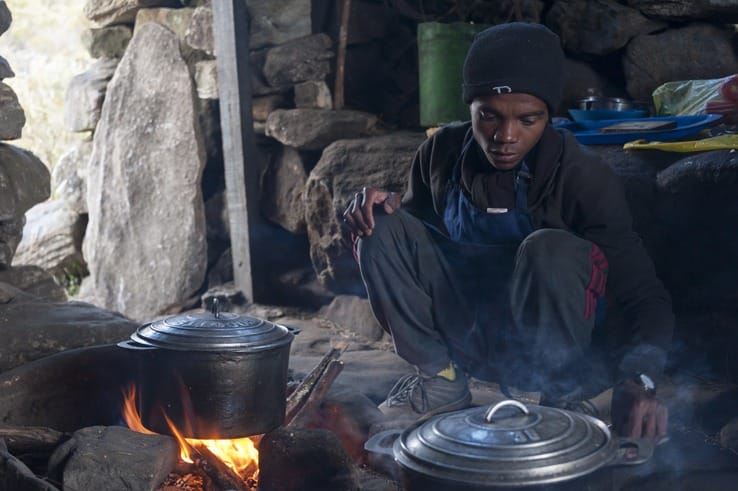
Most restaurants in cities will offer French dishes alongside tasty Malagasy fare, a step above hotely slop. Think green peppercorn zebu steak, fish with meuniere sauce and garlic prawns, usually costing about 4€ per dish. Malagasy favourites include romazava, made with meat and a spinach-like veg, and ravitoto, a sort of ginger stew. They’re usually a bit cheaper than French offers.
You can even get real haute cuisine for a steal in Madagascar; for example, excellent Mad Zebu (run by a Parisian-trained chef) in the dusty town of Belo-sur-Tsiribihina, offers a three course meal for 45,000 Ariary (about 12€).
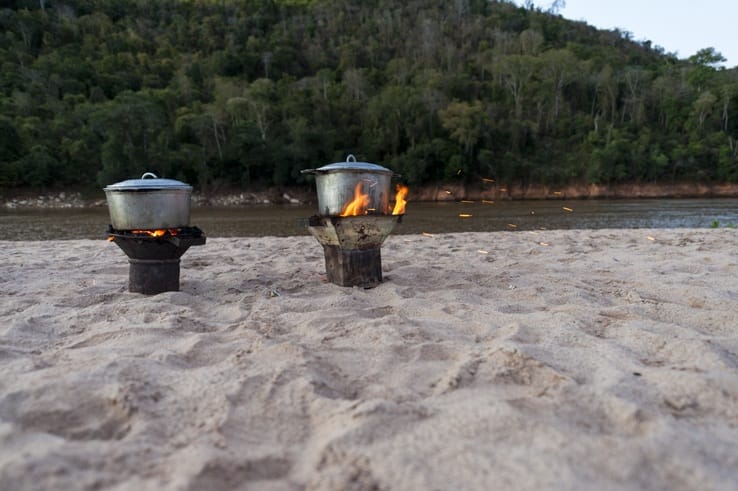
Street food can be alright, but it’s usually snacky stuff like sambo (samosa), nem (spring rolls) and my fave, bonbon de pistache (peanut brittle).
9) Get a Visa Card
Pretty much all towns in Madagascar have a Bank of Africa branch, but the ATM only accepts Visa. In larger towns such as Tana, Antsirabe, Fianarantsoa and Tulear you can also find other banks, accepting Mastercard. Maestro is only accepted at Société Générale which is even rarer.
So, save yourself a hassle and get a Visa card if you haven’t got one yet!
10) What’s the deal with Malaria?
Malaria tablets yes, malaria tablets no? Better to be safe than sorry, in my opinion. Malaria is not only present in Madagascar, it is a high risk throughout the country all year. Dengue fever is also present, so don’t take this lightly.
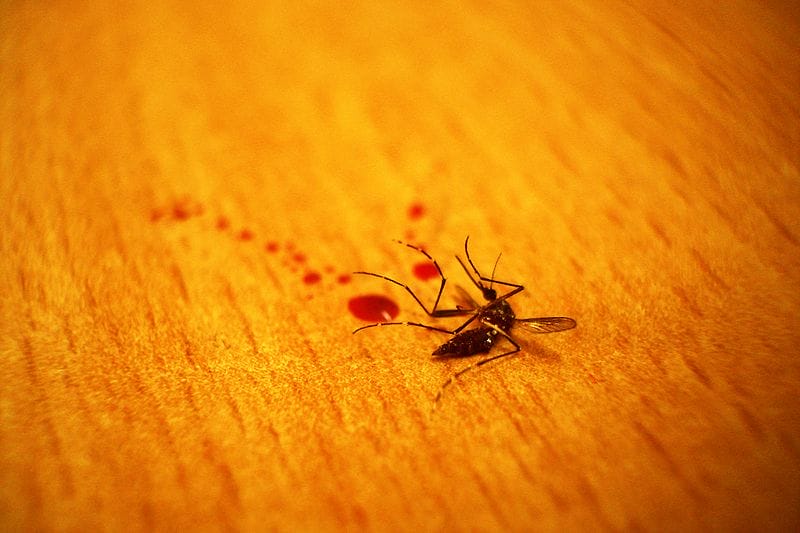
And what about wifi?
Wifi can be found in nicer hotels and some cafés/restaurants here and there, but it is usually slow and unreliable.

I’m not sure why I’ve never been so keen about visiting this part of the world, it doesn’t look like the most easy and straight forward place to travel to, but that makes it even more interesting in a way. You clearly showed that it’s possible to travel in Madagascar interdependently and that would be how I’d prefer to do it if one day I’d ever make it there 🙂
You’re definitely right Franca. Madagascar is expensive to get to, and hard to get around, but that makes it a rewarding experience. I would definitely recommend it to you and Dale.
I AM BEHIND, in my The Crowded Planet reading!! wow, thoroughly enjoying these Madagascar posts, but I will be honest I think this is too rich for my blog. The idea of the taxis is a little intense. Maybe if I was 10 years younger and traveling alone.
But your photos are so incredible that I thought “I can do this!”.
Ok going to go start dinner, and finish this series tonight. You guys are incredible people!
Angie from reasons to dress
Thank you so much for your kind words Angie… you’re right, taxi-brousses are kind of hardcore, but Madagascar is really amazing! You could rent your own Renault 4 and cruise around the island’s markets looking for printed fabric! And I’m sure Zeno would love the lemurs and other creatures!
Great tips! I’m loving your Madagascar posts and photos so something to keep in mind for sure 🙂 I’d definitely pay a little extra to skip the ‘utterly disgusting’ dishes!
Thanks Hannah! Besides the disgusting dishes there’s some amazing French fare, so it’s a joy even for foodies!
Wow, that’s a great comprehensive guide 🙂 amazing!
Thanks for stopping by Sammi!
After reading this, and your previous post, I would love to visit Madagascar. I like the fact that you have highlighted that we can travel independently around the country. When researching your trip, how did you guarantee that the locals you were using were reputable? I prefer to use locals as guides rather than relying on bigger companies but I am sometimes wary of who to pick.
Hey Tam! I must admit, choosing the right local operator might be a bit of a gamble at times, especially when you are just emailing each other and haven’t met face to face. This is why I never pay anything upfront and just wait to get there, and always keep a few days on either side of the planned tour in case something goes wrong. In this case, I found Madagascar Tropic Voyage totally randomly on the Internet, and got in touch with Lanto, the owner. I was immediately impressed by his excellent English and great communication skills, and even to the fact that he answered promptly (emails can go unanswered for weeks in Madagascar). My instinct said trust him, and I was right. But normally, I encourage caution. Do your research online, then meet the operator and pay only if it feels right. if not, look for another one locally. You’ll always find something!
Wonderful, Margherita. National Parks, while on the pricey side, couldn’t be more worth it in my opinion! These sights you have shared are just stunning! And in regards to the malaria concerns, absolutely, better safe than sorry. I took malaria pills when I went to SE Asia. I didn’t suffer any side effects except an odd one: my face would burn so easily!!!! Even with so much sunscreen. I would burn!
hey Alli! Thanks for your comment! I think you took doxyxyclin in SEA… I took lariam and had no problems whatsoever aside from weird dreams. But I definitely agree – better safe than sorry!
Wonderful tips and advice – and especially love that you included advice to use local travel agencies. We always try to use local businesses in each new place we visit to ensure the money we’re spending goes to the local community.
A great article!
That’s the best way to do it Meg! Thanks for stopping by!
Thanks for all the great tips! Madagascar doesn’t seem like the easiest place to travel to from reading your posts, but I think those types of places are the most rewarding. 🙂
That’s so true Beth. It was definitely a rewarding experience!
Fantastic tips and great need-to-know points! It might be some time before I make out to this part of the world, but I will definitely be keeping your site in mind for when I have to research! 🙂
It’s an amazing place nature-wise, but I think finding vegan food would be a hassle. I’m sure you’d love it though, you may just need to plan extra-carefully!
Just what I’ve been looking for! I went to Thailand last month instead of Madagascar as I wasn’t very confident about independent travel in that island country.
But your tips are going to help me a lot with my plans for next year.
I hear the waters around the island are really gorgeous. Did you explore the coastline?
Hey! Thanks for your comment 🙂 You’re right, the beaches are totally AMAZING. Our favourite was Anakao on the south coast, where we spent a week. We chose Anakao because it was easy to get to by public boat, but if you have your own transport, there are even better beaches such as Salary Bay and Andavadoaka!
Ooh! Sounds tempting. Thanks for the tip! 🙂
Even though Madagascar isn’t on the top of my wishlist, I’ll definitely remember these for the future. You never know where the world may take you…
You should go Anto! It’s a nature lover heaven!
These are great tips! I particularly enjoyed the first four points about transportation– definitely an extremely important aspect of any trip. Thank you for this insightful article!
Thank you Jessica! Madagascar is amazing 🙂
Great post Margherita!
Undoubtedly, any nature lover (myself included) planning to visit Madagascar finds this article freakingly interesting!!!
Don’t forget that by 2016, a recently-approved Parlement bill ruled that tourist visiting the Island should pay Ariary 60,000 (approx USD 21) for 30 day visas. A two-month visa would be the double of that amount. (In my humble opinion, such information is of interest for anyone willing to venture there-in).
Speaking of locally-owned tour agencies to choose, I would suggest you to browse Tsiky Tour. This tour operator seemingly tops all its counterparts thanks to its clear-cut, cheap package.
Yes, Madagascar is amazing 😉
I enjoyed the article and the pictures very much. I did the independent back pack travel in Madagascar in 2002 for several months with Mauritius trip to split the Visa regulations. I enjoyed Madagascar so much that I am now a resident for going on 13 years.
Your observations are spot on and I see they haven’t changed much in all this time, except for now there is WIFI, which makes independent travel all that much easier and web sites are more plentiful. I have WIFI in my home for example.
Island paradise can lead to such an easy life and idleness. To stay active I have opened up a not for profit school in Mahajanga @Madagascarschool over the last two years.
I bought myself one of those Renault 4 years ago for $1500 dollars. They are great to get around in and in the Bush Country where my school is located a few miles out of Mahajanga. They are even great to get around on the muddy roads in rainy season and a savings on gas, which is expensive here–About $5 a gallon
Thanks again- I am so glad I found you and the Crowded Planet
http://www.baobabschoolecole.com/
Alex
Ciao Margherita!
Wonderful and incredibly useful posts!!!
Im going to Mada for 24 days in June-July with my boyfriend.
We are on a low budget, so, as you suggest, we would definitely try to get from one place to the other by taxi-brousse or whatever option is presented at the moment.
However, same as you, we want to do some parts that require pre-planning (like Tsiribihina + Tsingy; Andringitra (Pic Boby), and/or trek to Manakara).
Did you organised some of your meet-ups with the guides from home by email?
If yes, did this “forced” you to stick to your trip plan in order to be present in one place at the right time on the right day?
I am asking this because our major concern is: on the one hand, we want to get the most out of our trip, without cutting it short by wasting time looking for guides (24 days are not that much at the end). On the other hand, we love to keep possibilities open to last-minutes changes of plan.
Do you have any suggestion for us?
Thank you very much! and sorry for the harass!
Ciao Giulia! Sorry it took me a while to reply to your comment. I definitely recommend looking for a guide for Tsingy and Tsiribihina, as roads are terrible in that part of the country and taxi brousses don’t run regularly. We went with Madagascar Tropic Voyage and were very pleased with their service and the level of flexibility they offered. They have a 7 day package to Western Madagascar out of Antsirabe at about 300 euro per person. After that, you return to Antsirabe and can start heading south on the Route 7, where most national parks are located. Taxi brousses run regularly so I don’t think you need a guide for this stretch. The Pic Boby trek we arranged with JB Trekking directly in Ambalavao for the day after we arrived. June-July is high season so you won’t have troubles finding people to go with. Feel free to message me anytime, hope you enjoy your Mada trip!
Hi Margherita,
Thanks for the great article; it was really helpful and informative. I’m planning a photographic trip with a charity around Baie de Baly area and would love to get some time to travel around by myself. However, I’ve been told some very conflicting things about crime and safety in Madagascar; personal accounts are by and large very positive whereas anything official seems to paint a rather alarming picture. How safe do you think travel with camera equipment would be, taking account the usual precautions of not flashing gear around etc. Thanks in advance!
Dear Joseph
Thanks so much for getting in touch. You are asking a very good question there. We always thought Madagascar was safe and never hid the fact we had large cameras. We walked with our camera out most of the time in all cities (except for Tana) and national parks, and never had issues. We didn’t have it out on taxi brousses just because it was so cramped. We never had a single issue – but towards the end of our trip we heard of some people who had their gear stolen from hotel rooms and during robberies or hijackings. I don’t know if we were lucky, or if the crime issue was blown out of proportions. Most people that experienced crime seemed to have had gear stolen from their hotel rooms, so I would say take extra care with that, and if possible get in touch with a local guide to get up to date news about security.
Have a good trip, would love to hear how it goes!